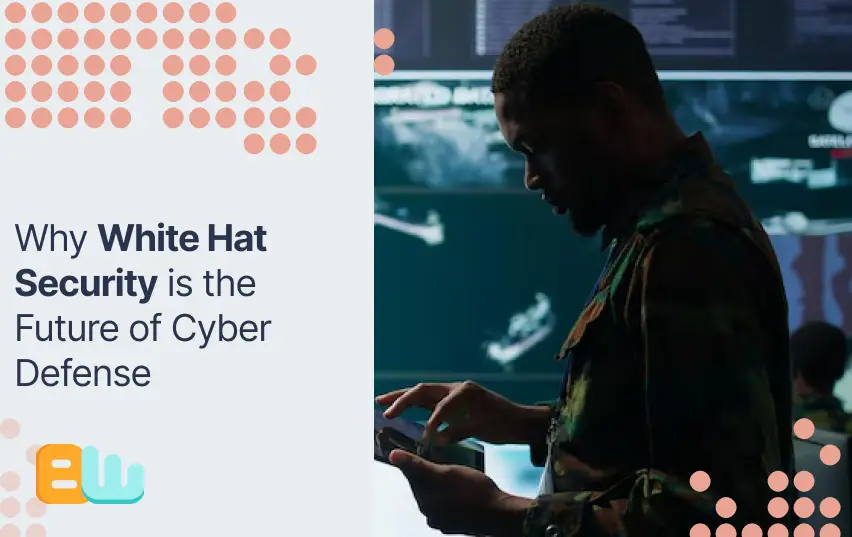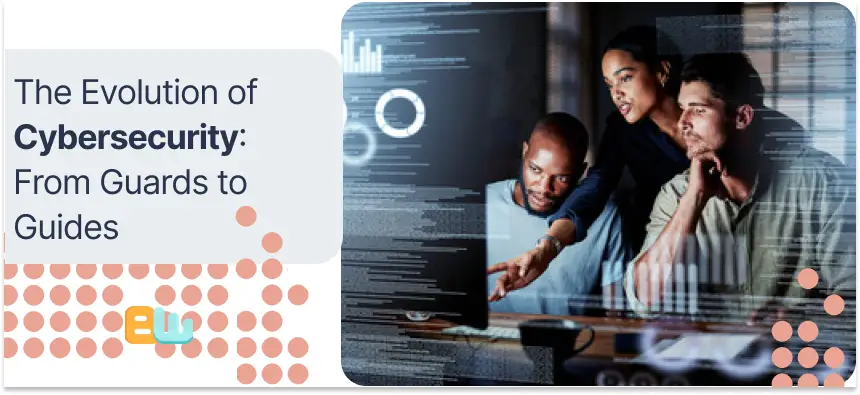
In today’s digital world, taking action before an attack is crucial for strong cyber defense. As threat actors change their methods more and more, traditional ways of responding after an attack are not enough anymore. You must think ahead and stop threats before they affect your work. This is where white hat security comes in. It changes the focus from reacting to incidents to taking steps to prevent threats.
The Evolution of Cybersecurity: From Guards to Guides

Cybersecurity has usually been seen as a way to defend like a fortress. This means strengthening walls and adding more protection against attacks. But threat actors are becoming smarter and more determined, showing that this reactive approach is not enough.
Today’s cybersecurity needs a different plan. It’s important to be proactive and flexible. We need skilled guides who can spot risky paths. They can help organizations move safely through the tough challenges of cyber threats.
Tracing the Shift from Reactive Measures to Proactive Strategies
Traditional cybersecurity mostly focuses on reacting to incidents after a breach has occurred. While this is important, it often becomes costly and disruptive. Organizations have to rush to fix the damage and recover lost data.
Proactive strategies are different. They focus on finding and fixing vulnerabilities before attackers can exploit them. This approach means constantly checking systems for weak points, predicting possible attacks, and implementing measures to strengthen security.
By shifting from a reactive mindset to a proactive one, organizations can lower the chances of successful attacks, lessen the impact of security issues, and improve their overall cyber resilience.
The Role of White Hat Hackers in Modern Cybersecurity
In information security, white hat hackers are very important. These ethical hackers use their skills to mimic real attacks. They find weak spots that bad actors could exploit.
Using methods like penetration testing, white hat hackers give organizations key details about their security. This helps security teams fix weak points, close up vulnerabilities, and strengthen their defenses.
When organizations use ethical hacking, they have a better chance of fighting cybercrime and keeping their information security strong.
Understanding White Hat Security

White hat security is a safe and responsible way to handle cybersecurity. Unlike bad hackers, white hat hackers have permission and follow the law. They always aim to make things safer.
Their goal is to find and exploit system weaknesses smartly. They do this like a bad hacker would, but their aim is to fix the problems before any damage occurs.
Defining the Ethos of White Hat Hacking
At its core, white hat hacking is about helping others. Ethical hackers use their knowledge to do good and follow strong ethical rules to keep their actions legal and helpful.
They focus on improving security. This drives them to learn new skills, stay aware of the latest threats and vulnerabilities, and share their knowledge with the security community.
Ethical hackers are important in the fight against cybercrime because of their commitment to doing the right thing and their technical skills.
How White Hat Techniques Prevent Cyber Attacks
By simulating real-life attack situations, white hat hackers can find and exploit weaknesses before bad actors do. This proactive approach to threat detection helps organizations implement the right security measures and improve their defenses.
White hat techniques reveal flaws in systems and apps through methods like penetration testing, checking for vulnerabilities, and reviewing code. This allows organizations to fix vulnerabilities, set up security properly, and use strong security protocols.
By addressing these flaws early, organizations can greatly lower their risk of attack and prevent cyberattacks from occurring.
Implementing a White Hat Framework in Your Organization

Adopting a white hat security framework means changing how we think. It involves embracing proactive cybersecurity. Organizations should see security as an ongoing process, not just a one-time task.
To do this, they need to set clear security rules, invest in the right tools and technologies, and create a culture in which all employees are aware of security issues.
Steps to Build a Proactive Cyber Defense Team
Implementing a strong white hat framework starts with putting together a team of active cybersecurity experts. This team should have different skills, including ethical hacking, risk assessment, security setup, and incident response.
Regular training and professional growth are essential. They help keep the team’s skills sharp and up-to-date with new threats and vulnerabilities. Building clear communication and teamwork within the group and with other departments is vital. This ensures quick and effective incident response.
Tools and Technologies Powering White Hat Security
Using the right tools and technology is very important for keeping data safe through proactive cybersecurity. IT departments need to invest in strong security information and event management (SIEM) systems, intrusion detection and prevention systems (IDPS), and endpoint detection and response (EDR) solutions.
Organizations also need to create clear incident response plans. These plans should explain how to identify, contain, and fix security problems. Regularly testing and updating these plans is crucial to ensuring they work well in real-life situations.
Additionally, organizations should think about using threat intelligence platforms. These platforms help provide useful information about new threats, weaknesses, and ways attacks might happen. By knowing what threats are out there, organizations can change their security measures and be ready for any possible attacks.
Case Studies: Success Stories of Proactive Cyber Defense

Looking at real-world examples of companies using white hat strategies teaches us important lessons for improving security. These stories show the real benefits of good cyber defense.
On the other hand, looking at cases where cybersecurity incidents caused major breaches teaches us the need to learn from our past mistakes and keep improving our security measures.
How Companies Thwarted Attacks with White Hat Strategies
One well-known case involved a big bank. They hired a team of ethical hackers to test their online banking site. These hackers found a serious problem. This problem could have let malicious actors bypass login security and get into customer accounts.
By fixing this issue before any bad actors could take advantage of it, the bank prevented a major data breach. Their proactive approach saved them a lot of money and kept them safe from losing money, facing bad reviews, and paying fines.
This example shows how crucial proactive security measures, like penetration testing, are. They help find and fix potential threats before they can harm.
Lessons Learned from Failed Cybersecurity Incidents
Looking at cases where companies faced serious problems from weak security shows why being proactive is essential. For example, a big retailer had a huge data breach because they ignored clear signs of problems in their point-of-sale systems.
Even after getting multiple warnings and alerts, the retailer only reacted after the breach. They patched systems too late, which led to the theft of millions of credit card details. This caused significant financial loss and hurt the company’s reputation badly.
This case highlights that simply reacting to problems is no longer enough. Companies need to take a proactive approach to cybersecurity. They should focus on looking for risks, managing vulnerabilities, and monitoring systems constantly. This way, they can better handle potential vulnerabilities and stop breaches before they happen.
Conclusion
Embracing white hat security practices is key to strong cyber defense. Organizations should move from reacting to threats to using proactive measures. White hat hackers are important for finding vulnerabilities and strengthening systems against cyber attacks. To build a strong defense, companies need skilled teams and advanced technologies. Case studies show how proactive strategies have stopped attacks. Making the switch to a proactive cybersecurity approach needs dedication and education. By learning from past mistakes and improving constantly, organizations can create solid defenses to protect themselves against cyber threats.
